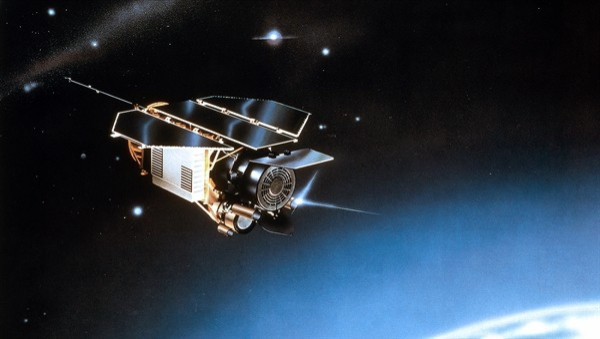Germany's Defunct ROSAT Satellite Falling Within Days

Germany's defunct ROSAT satellite will fall back to Earth some time this week, but German space officials say the fall site is still a mystery. Re-entry is expected between Friday and Oct. 24.
The time and location of re-entry cannot be predicted precisely, the German Aerospace Center (DLR) stated. It also noted that re-entry can be calculated only to within two days but certainty will grow as the date draws closer.
The scientists say that even a day before re-entry the estimate will only be accurate to within five hours.
According to DLR, the uncertainty in the re-entry date is because of the fluctuations in solar activity. Solar radiation heats up the Earth's atmosphere and it increases the atmospheric drag. The center noted that short-term fluctuations in solar activity are governed by an 11-year cycle.
At present, we are approaching the next maximum, which has turned out to be much lower than expected, the German center stated.
ROSAT, which is officially known as German Roentgen Satellite, is the latest dead satellite to fall back to Earth. Its re-entry comes about a month after NASA's dead Upper Atmosphere Satellite, or UARS, a climate satellite, took a plunge somewhere in the Pacific Ocean late last month.
ROSAT is a 2.4-metric ton X-ray space observatory. Scientists expect that it will break apart as it re-enters the atmosphere. Up to 30 pieces weighing a total of 1.7 tons may survive re-entry to reach the surface, according to DLR, and the largest single fragment will probably be the telescope's mirror, which is very heat-resistant.
We don't expect big parts to re-enter, except the mirror and the glass and ceramic parts, DLR board chief Jan Woerner told Space.com. Usually during re-entry, you have rather clear burning of all the elements, but glass and ceramics may survive and may come down in bigger pieces.
The ROSAT satellite was launched by NASA in June 1990 as part of a U.S.-British-German venture. The satellite's star tracker failed in 1998 and its onboard camera was directly pointed at the sun, permanently damaging the spacecraft. ROSAT was decommissioned in February 1999.
The satellite doesn't have a propulsion system and there is no fuel left onboard. It will therefore make an uncontrolled re-entry. There is a 1-in-2,000 chance a piece of ROSAT satellite could strike someone on Earth, DLR officials say.
NASA's UARS had a 1-in-3,200 chance of a debris hit.
We expect public attention because it's a satellite coming down, but in history, we have had much bigger debris fall, Woerner noted.
© Copyright IBTimes 2024. All rights reserved.






















